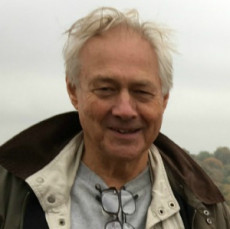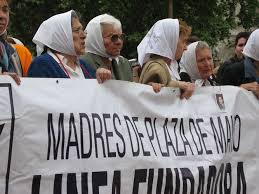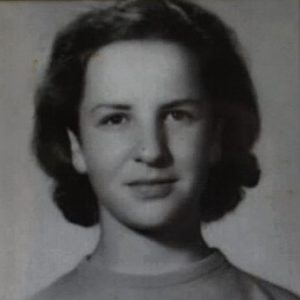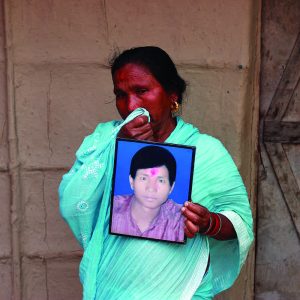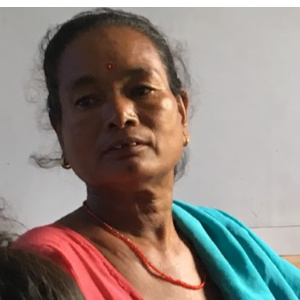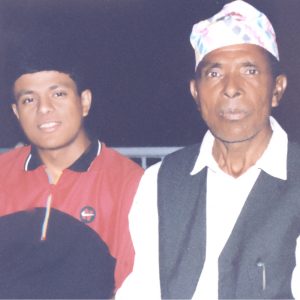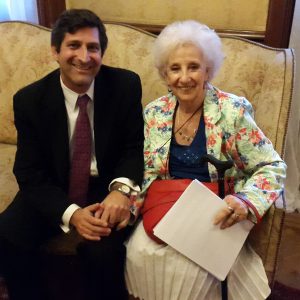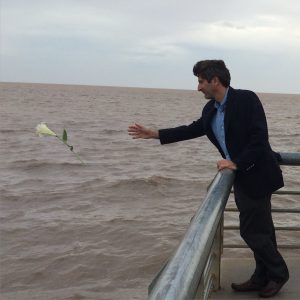Washington DC, September 11: In the summer of 1976, when I started out as a reporter in Geneva, Argentinians began to arrive at the United Nations with a haunted look in their eyes. They were numbed by what had happened in their country following a military coup in March, and fearful of being hunted down.
They were right to be scared. Back in Argentina, the dictators had launched a dirty war against “subversives” that would claim as many as 30,000 lives. The tentacles of their campaign would extend to Europe, where they installed a team of former torturers at the Argentinian embassy in Paris and instructed their diplomats in Geneva to muzzle critics at the UN. It was not easy to report on such a story. My interviews with Argentinians were conducted in secret.
And yet something other than terror was also under way. We did not know it at the time, but these frightened people were at the forefront of a movement that would eventually advance democracy throughout Latin America and revolutionize international human rights.
The movement was led by family members of the disappeared and it unfolded simultaneously in Argentina and abroad. In 1977 Mothers of the Plaza de Mayo took to the streets of Buenos Aires to protest the disappearance of their children, followed by the Grandmothers. Both groups led the search for answers after democracy was restored in 1983 and helped the new government come up with a formula – a truth commission followed by prosecutions – that has become the blue-print for transitional justice everywhere.
The families have also made an impact on the international stage. They inspired the UN in Geneva to create a working group to investigate disappearances worldwide. Disappearances were declared crimes against humanity in 1998 and criminalized by a new international treaty in 2007. The practice is now viewed with the same horror as torture.
And all of this was triggered by the actions of desperate family members, most of them women.
It all came back to me recently while making two podcasts on August 30, the International Day of the Disappeared, with my colleague Beth Alexion from The Advocacy Project.
We talked with two family members from Argentina and Nepal who have made it their life’s work to denounce disappearances. Ariel Dulitzky lost two maternal cousins in Argentina and went on to a distinguished career as a lawyer, professor and chair of the UN working group on disappearances. Ram Bhandari’s father disappeared in Nepal in 2001. After democracy arrived with a rush in 2006 Ram set about building the Network of Families of the Disappeared in Nepal (NEFAD), which now represents over 1,000 families.
Our podcasts offer a fascinating contrast between two countries that emerged in triumph from repression and violence, but have chosen different paths to recovery. Argentinians have addressed the challenge head on, but Nepalis have largely tried to sweep the disappearances under the carpet. Neither approach has entirely worked. Both societies remain haunted by the disappeared and wonder if they can ever recover.
The Terror
Ariel Dulitzky was nine when the military seized power in Argentina in March 1976. He does not remember much about the time, although he did realize that something was up when his parents spoke in Yiddish so that he would not understand.
They were probably discussing the disappearance of his mother’s cousins Mathilde and Alicia. It later emerged that Mathilde had been taken to the Navy Mechanics School in Buenos Aires, also known as the ESMA, where over 5,000 Argentinians were tortured and killed. Most were dropped from planes into the River Plate. Some women even gave birth in shackles at the ESMA before being separated from their infants and killed. Alicia’s fate has never been explained.
Asked what Mathilde might have endured in such a dark place, Ariel replies: “I can’t imagine.” He visited the ESMA as chair of the UN working group. It left him shaking and reminded him of his responsibilities towards the families.
The disappearances in Argentina had a garish quality. Some of the killers were infamous even before the dictatorship fell. They included Lieutenant Alfredo Astiz, known as the “Blond Angel,” who infiltrated the Mothers of the Plaza de Mayo and supervised torture at the ESMA. Astiz earned further notoriety when he was captured by the British during the early stages of the Malvinas/Falklands war.
What moved people like Astiz? Ariel assumes that they were driven by the perverted ideology of state security and encouraged by the passivity of most Argentinians. Also the very tactic of disappearances was designed to intimidate. A mere inquiry might put the captive at even greater risk.
Ram Bhandari’s father Tej Bahadur disappeared in Nepal in very different circumstances. Between 1996 and 2006, Nepal was torn by a brutal war between the government and Maoist rebels. Around 2,500 Nepalis disappeared. Yet this was not the calculated reign of terror seen in Argentina. Many of the victims were denounced to the local police or to Maoist rebels by jealous neighbors. Ram’s own father was a respected former teacher who was committed to social justice.
Regardless of the reasons, the impact on families was devastating in both countries “We had a happy family life,” says Ram. “Our whole family universe has been destroyed.”
The Needs of Families
It is impossible to understand families of the disappeared without understanding what motivates them. This is not complicated, given the bonds within families. Even so, relatives of the disappeared are probably unique among human rights advocates for their courage and tenacity.
Several Mothers of the Plaza De Mayo disappeared during the dictatorship, but the group was undeterred and when their morale flagged others came forward. In 1995 a new group of family members emerged to harass the killers. These were the Hijos – Children of the Disappeared. They were known as “Scratchers” because they wrote graffiti on the houses of perpetrators like Astiz and jeered at them when they went to restaurants. Ariel calls this “social accountability.”
The challenge facing families in Argentina and Nepal changed after democracy was restored and the adrenalin rush of protest gave way to an exhausting search through police stations and morgues. Women bear the brunt, which is another reason why this campaign is so unusual. Ariel recalls one tearful session with mothers in Peru who were forced to give sexual favors in return for scraps of information about their missing children. In Nepal, for a time, the government offered a pay-out to wives on condition that they declared their husbands dead. The women reacted with outrage.
Poverty is another driving force. Many of the disappeared in Argentina were from wealthy middle-class families. Not so in Nepal, where victims often came from minorities like the Tharu that are outside the economic mainstream and depend on agriculture. In rural communities, the loss of the family breadwinner is devastating.
We asked Ram to prioritize the needs of the families in Nepal. Memory and truth come top of his list, and he applauds the many creative ways that families have used to restore the identity of their lost relatives. This has included story-telling through memorial quilts, street theater, the naming of streets, and household shrines. If the entire community is involved so much the better, because the disappeared will be publicly vindicated. After truth and memory, for Ram, comes money and reparations. Justice and prosecutions are seen as less of a priority.
This might seem to ignore the lessons from Argentina, where truth and justice went hand in hand. CONADEP the truth commission gave way seamlessly to the trial of the nine former Junta leaders in 1985 – a watershed event for the country and profoundly important for the families. These nine men had casually dispensed life and death and to see them facing civilian judges strengthened the rule of law and the young democracy. The trial also helped to establish the truth. “Remember that the Mothers were called Las Locas – the crazies,” says Ariel. “(The trial) gave them a sense of establishing their own dignity and restoring the memory of their relatives.”
Hundreds of perpetrators have since been prosecuted, underscoring the importance of justice to recovery, although Ariel himself feels that the truth is probably more important.
The real point, though, is that transitional justice is about much more than justice. Ariel is also clear that priorities must be determined by those who have most at stake. His job on the UN working group was to support the families and never impose an agenda.
This has been ignored in the case of Nepal by human rights professionals, who have pursued legal accountability with a single-minded obsession. In 2014 the government of Nepal established two commissions to investigate the disappearances and promote truth and reconciliation. The law also promised an amnesty to perpetrators at the insistence of the military.
Western governments, UN agencies and the biggest names in human rights have seized on the amnesty as a reason to withdraw from the entire process of transitional justice, even though legal accountability is just one of many demands made by the families, who are surely the stakeholders that matter most. “They focus on their own agenda” says Ram. “But victims – we have different needs. They don’t listen well to the local groups.” His frustration is palpable.
Seeking Closure
How can individuals and families heal after a national trauma like the disappearances? That question haunts Argentina and Nepal, particularly as most of the facts will never be known. Even in Argentina, where the government has cooperated, the UN working group has only confirmed 4,219 cases and clarified 379. Of these, 335 victims were found to have died.
Not surprisingly, many Argentinians and Nepalis ask why the families cannot move on. Why should a tiny number of women hold the rest of society hostage to their obsessions, when their countries face so many other challenges?
The answer should be obvious to Americans as they remember the terrorist attacks on 9/11. When a loved one disappears, his or her family is suspended in a psychological limbo. As long as the questions persist – what, why and how – the wounds will never heal. Indeed, the uncertainty may even worsen as time passes.
But the reverse may also be true. The Mothers in Argentina found purpose in their search and may find it hard to call a halt if their loved one is identified, particularly if all they receive is a bag of bones. “The disappeared never grow old,” says Ariel. They will always be remembered as they were in the last photograph. The process of mourning will be long and complex.
Solidarity also explains why closure is so difficult. Even if her own child is identified, a mother might continue the quest on behalf of other women who have become her closest friends. As the Argentinian Grandmothers like to say: “They are all our children.” Ariel also notes that many campaigners have adopted the same social justice platform that their children died for. Ram from Nepal agrees: “My father was a simple man, but he had a dream. I am pursuing his dream.”
Nor is this just about individual closure, because families have their own collective memory. When someone is dragged from his or her home, the shocking event enters the family folklore forever. This explains why some of the most ardent campaigners in Nepal were infants at the time and too young to have known their fathers in person. Ariel himself recently discovered that Dulitzkys had perished in the Holocaust in Ukraine. He never knew them, of course, but they have now become part of his own identify. “Don’t ask me to give up my heritage,” he says.
Will Argentina ever fully recover from the disappearances? We put that question to Ariel and he deflects it. Sure, human rights advocates must be realistic if they are to remain credible. And yes, the disappeared will probably never be found.
But no society ever fully escapes its past, as the US is currently discovering with race and slavery. Ariel is convinced that societies which face the uncomfortable facts with tolerance and understanding will be rewarded. His own country Argentina has enjoyed almost 40 years of uninterrupted democracy. This, he says, is because it suffered through, and then thoroughly repudiated, the disappearances. Unfortunately, this message has still to register in Nepal.
A Time for Reflection
Our podcasts find Ariel and Ram in a reflective mood.
As Ariel prepares for a new semester at the University of Texas he is satisfied by his work with the UN and proud of what his country has achieved. But he remains haunted by what he has learned in places like the ESMA in Buenos Aires.
He withholds judgement on the UN group he once chaired. The group has asked 26 governments to explain 699 new disappearances so far this year and transmitted 58,606 cases to 109 governments in the past 40 years. At the very least, this shows that the sinister practice of disappearances is still widely employed and underscores the importance of the group. But 46,271 cases remain unresolved, raising the question of whether the group has fulfilled its promise to families. We hope to put that question to the group’s current members in a future podcast.
The case of Argentina raises other current concerns. Looking back at Argentina’s descent into terror, Ariel worries at creeping authoritarianism in the US and the Trump Administration’s contempt for the checks and balances of democracy.
For Ram, the last few months have only deepened the pain. Ram was in Europe when the pandemic broke out in March and he has not seen his family since. This seems cruelly ironic given the disappearance of his father. But at least, he says, the world now knows how it feels to be forcibly separated from those you love: “Families of the disappeared have been living through a pandemic for the last twenty years.”
- Listen to Beth’s podcast with Ram on Nepal
- Listen to Iain’s podcast with Ariel on Argentina
- Meet families of the disappeared in Bardiya, Nepal
- Donate to the Bardiya bag-making project, run by the wives.
Iain is the author of ‘Behind The Disappearances – Argentina’s Dirty War Against Human Rights And The United Nations,’ University of Pennsylvania Press.
Posted By Iain Guest
Posted Sep 11th, 2020

